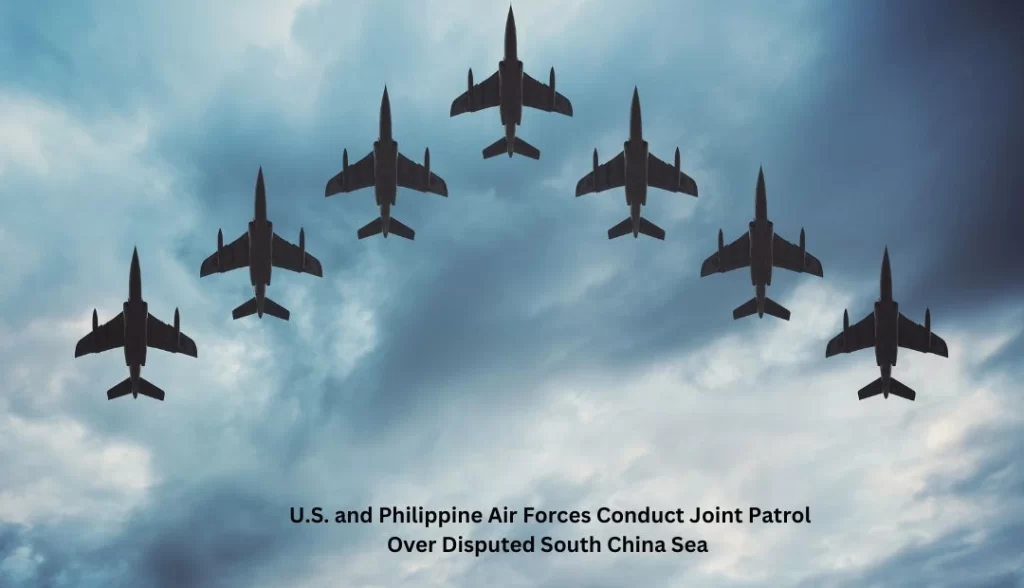Two Philippine Air Force FA-50 fighter jets accompanied by two U.S. Air Force B-1 bombers conducted a joint patrol and training exercise over the contested waters of the South China Sea on Tuesday, February 4, 2025, according to Philippine military officials. The operation was conducted near the Scarborough Shoal, a region where tensions flared last year after Chinese fighter jets fired flares to deter a Philippine aircraft.
The joint aerial drill marked the first collaborative air patrol between the long-time allies since U.S. President Donald Trump’s return to office. His administration’s foreign policy direction has raised questions among Asian allies regarding the U.S. commitment to regional security. Under former President Joe Biden, efforts were made to strengthen security ties across the Indo-Pacific to counter Beijing’s expanding military activities.
Philippine Air Force spokesperson Maria Consuelo Castillo stated that the exercise involved two U.S. Air Force B-1 bombers and three Philippine Air Force FA-50 fighter jets. The training included interception drills designed to prepare both forces for potential aerial threats.
“The exercises focused on enhancing operational coordination, improving air domain awareness, and reinforcing agile combat employment capabilities between the two air forces,” the Philippine Air Force noted in an official statement.
It remains unclear whether Chinese military forces guarding the Scarborough Shoal attempted to intervene during the patrol.
Tensions in the region escalated last August when two Chinese aircraft closely approached a Philippine patrol plane and deployed flares in an apparent warning maneuver. The Philippine government strongly condemned the action, denouncing it as an aggressive and unnecessary provocation.
The Philippine military later confirmed that the affected aircraft, a NC-212i transport plane, successfully completed its mission without any crew injuries. However, China’s People’s Liberation Army Southern Theatre Command defended its actions, asserting that the Philippine aircraft had “illegally” entered the shoal’s airspace, disrupting Chinese training activities.
At the time, Philippine military chief Gen. Romeo Brawner described the incident as a violation of international aviation safety regulations, arguing that it endangered Philippine military personnel and impeded lawful operations within the country’s sovereign air.
Scarborough Shoal, referred to as Bajo de Masinloc by the Philippines and Huangyan Island by China, has been a focal point of maritime disputes between the two nations. The area is strategically significant due to its rich fishing grounds and potential energy reserves.
Speaking on the latest patrol, Castillo emphasized that Philippine forces remain steadfast in their operations. “We are always prepared for any contingency—this is a key component of our training,” she said, addressing concerns over potential confrontations with Chinese forces. “Regardless of any coercive or aggressive actions, the Philippine Air Force will not be deterred from fulfilling its mandate.”
The United States has also reported previous encounters with aggressive manoeuvres by Chinese military aircraft over the South China Sea. U.S. forces frequently conduct freedom of navigation and overflight operations in the disputed waters, reinforcing their commitment to ensuring an open and secure Indo-Pacific region.
China has repeatedly expressed opposition to U.S. military operations in the area, contending that such actions escalate tensions and pose a risk to regional stability.
The South China Sea remains one of the most contested maritime regions, with overlapping territorial claims involving China, the Philippines, Brunei, Malaysia, Vietnam, and Taiwan. While numerous nations claim portions of the sea, recent confrontations have primarily involved Chinese and Philippine military and coast guard forces, particularly near Scarborough Shoal and the Second Thomas Shoal.
The United States has reaffirmed its security commitments to the Philippines, stating that any armed attack against Philippine military forces, vessels, or aircraft—including those in the South China Sea—would trigger U.S. defence obligations under the Mutual Defense Treaty.
This latest joint patrol underscores the continued strategic partnership between the U.S. and the Philippines amid ongoing geopolitical tensions in the region.







